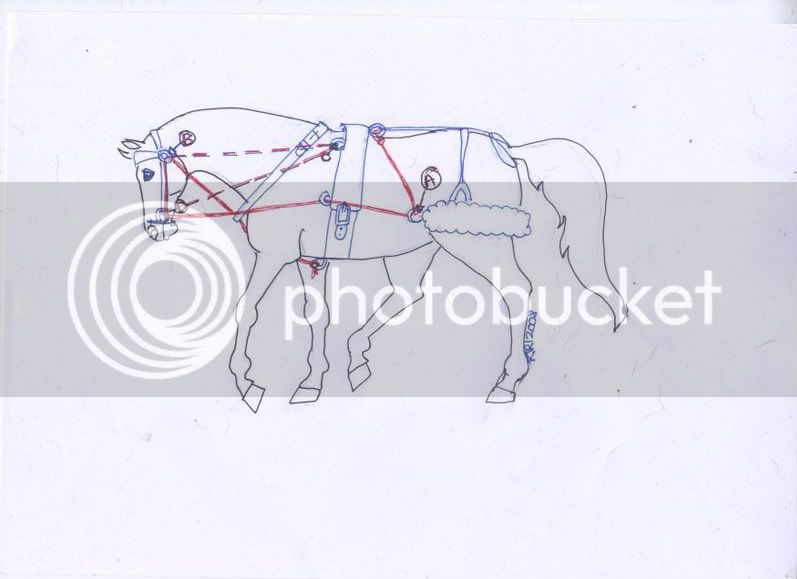Well I'm going to recommend a totally different way to try (I'm well know for my odd ideas/way of thinking LOL!!)
Slow things down - no fast trotting - and no side reins. Use a proper cavasson properly fitted if you can get a mini one, or else use a headcollar with the metal squares either side of the noseband - you need to fix the lunge rein to the side of the headcollar for each rein, not to the ring under the 'chin'.
OK now start walking him in a small circle round you - about 8 feet away from you at the most, make sure that you always have the perfect triangle, with him as the long side, your lunge line in contact with the headcollar and your whip held close to his rear end at around hock height. If he is on the left rein anchor your left heel into the ground and turn on it as he goes round you - do not take a step from that spot - and alter this to your right heel on the right rein, your other leg will simply be stepping round your 'anchored' leg. This will give you a perfect circle!
When he is happily walking round in this 'strange to him' way, ask him to jog on, click at him and keep clicking with every step he takes - you are creating a rhythm to help him pick up the steps - click, click, click as he goes one two, one two (told you I was mad!!) He should be doing an ACTIVE, BOUNCY, SLOW TROT not a proper trot, think upward rather than forward. You may need a little practice to perfect it, but he will soon catch on and I guarentee that once perfected, he will stretch down after a couple of minutes!
This movement is difficult for a horse to maintain, especially until they get fitter, so after a couple of minutes (no more to start with) let the lunge rein flow out and allow/encourage him to trot on freely on a full circle to rest his muscles. Then a short walk round before switching sides and doing the whole exercise again on the other rein. When you start this, he will be quite tired at the end as he has done a lot with possibly unfit muscles so put him away and let him rest. As he gets fitter he can do more 'close circle' work, but by then you could increase the circle a bit to let you make the sessions a little longer, but a distance of 12 foot away from you is a bit too far for you to give a light tap if needed with your whip, 10 feet is about perfect.
Also please remember this way of working is like you going to the gym and 'setting too' without slowly warming up. So if he is coming from his stable/barn do give him a little hand walking first to loosen up his muscles and joints (dont do this by lunging on a big circle before you start!)
He will soon be 'bouncing' on his back legs and lightening his front end after a couple of weeks, plus it is a great way to get him fitter! But just take it steady and dont ask for too much too soon.
Sorry this is so long!! Hope you can make sense of it? If not post again and will try a different way of explaining. Good luck!!




